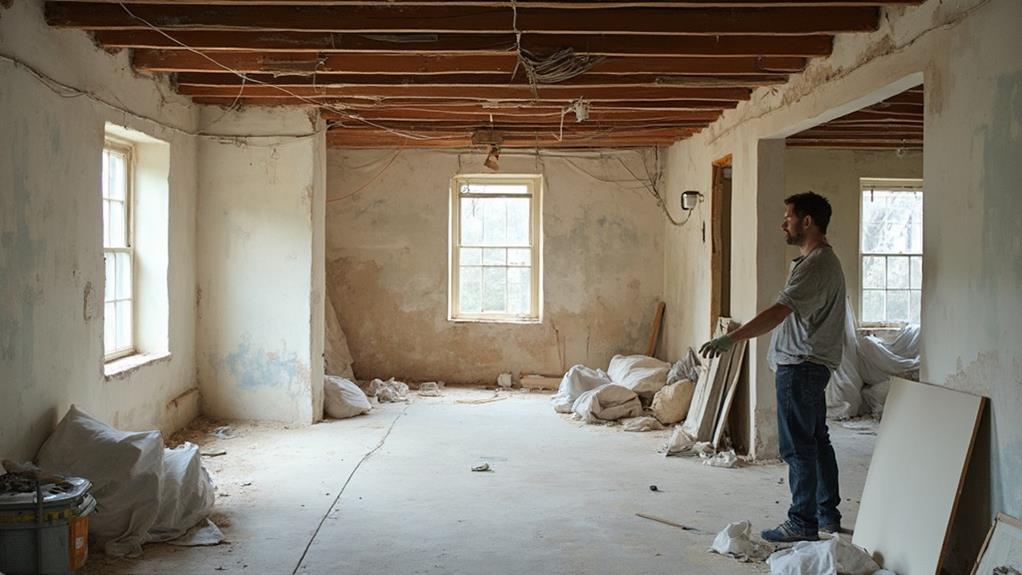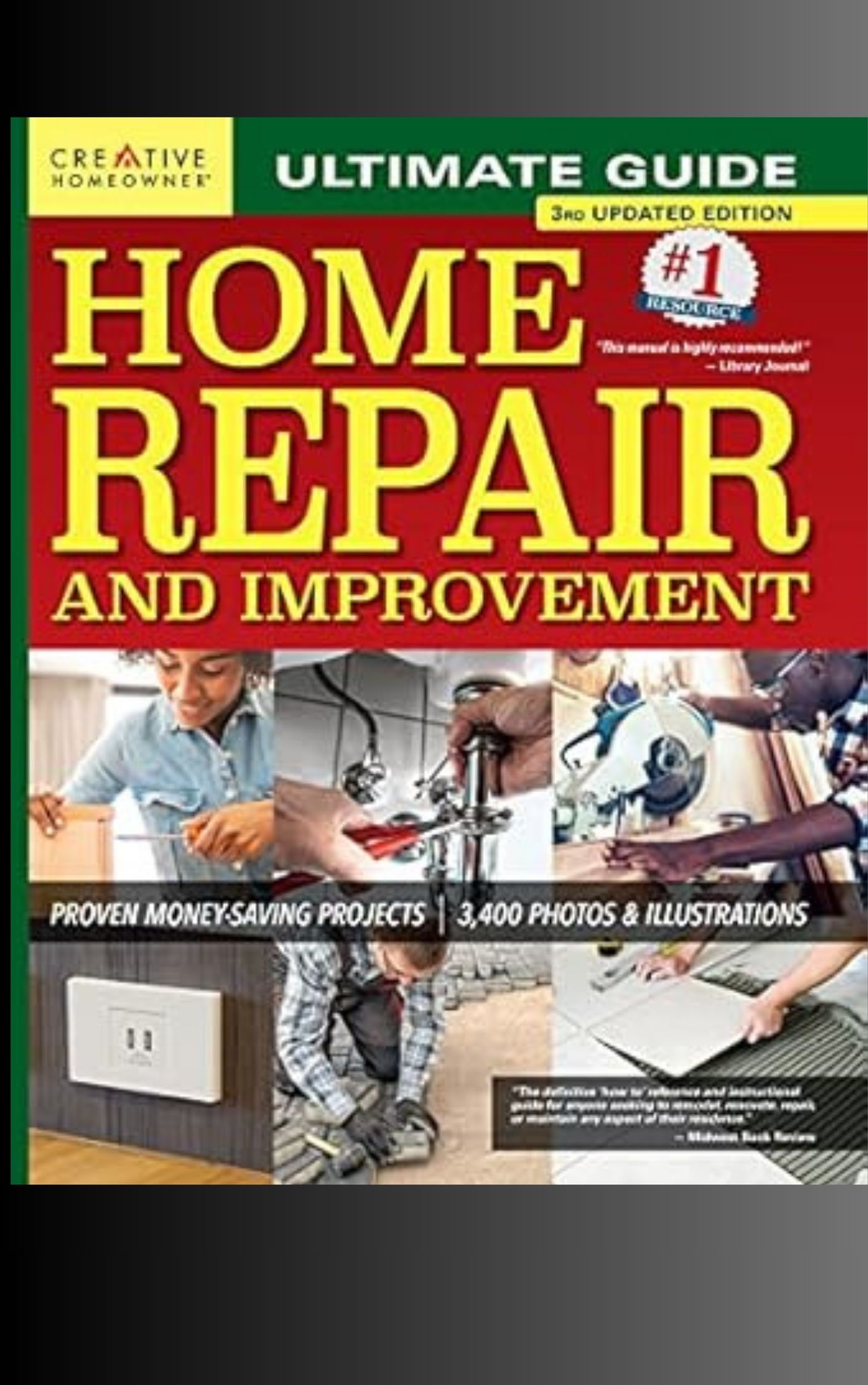Managing a multi-room renovation on a tight budget requires strategic planning and resourcefulness. Start by prioritizing essential repairs and high-impact changes. Tackle DIY projects where possible, learning new skills to save on labor costs. Shop smartly for materials, comparing prices and seeking discounts. Reuse and repurpose existing items creatively to minimize expenses. Focus on cost-effective upgrades like refinishing cabinets, updating hardware, and refreshing paint colors. Create a comprehensive renovation plan to ensure efficient use of time and resources. By implementing these strategies, homeowners can achieve significant improvements without breaking the bank. Explore further to uncover additional budget-friendly renovation techniques.
Prioritize and Plan Strategically

Three key steps form the foundation of managing a multi-room renovation on a tight budget: assess, prioritize, and plan. Begin by thoroughly assessing each room's condition, identifying essential repairs and desired improvements.
Next, prioritize these tasks based on urgency, functionality, and impact on your daily life. Finally, create a comprehensive plan that outlines the order of renovations, estimated costs, and timeline.
When prioritizing, focus on addressing structural issues and necessary repairs first. These typically include plumbing, electrical work, and any safety concerns. Next, consider which improvements will add the most value to your home and quality of life. Energy-efficient upgrades, for instance, can lead to long-term cost savings.
Strategically plan the renovation sequence to minimize disruption and maximize efficiency. Group similar tasks together, such as all painting or flooring projects, to streamline the process and potentially reduce costs. Consider seasonality when scheduling outdoor work or projects that require ventilation. By carefully prioritizing and planning your multi-room renovation, you can ensure that your limited budget is allocated effectively, resulting in a successful and satisfying home improvement project.
DIY Where Possible
Resourcefulness is key when managing a multi-room renovation on a tight budget, and one of the most effective ways to stretch your dollars is by taking on DIY projects where possible. Assess your skills and tackle tasks you're comfortable with, such as painting, wallpapering, or installing baseboards. These projects can significantly reduce labor costs while allowing you to personalize your space.
Research and learn new skills through online tutorials, workshops, or home improvement books. Simple tasks like tiling a backsplash or installing floating shelves can be mastered with practice. However, be realistic about your abilities and time constraints. Complex projects or those involving electrical, plumbing, or structural work should be left to professionals to ensure safety and compliance with building codes.
When considering DIY, factor in the cost of tools and materials. Borrow or rent equipment for one-time use to avoid unnecessary purchases. Salvage and upcycle materials where possible, giving old items new life while saving money. Remember that DIY projects often take longer than anticipated, so plan accordingly and be prepared for potential setbacks. By strategically incorporating DIY elements, you can significantly reduce renovation costs without compromising quality.
Shop Smart for Materials

While DIY projects can save money, smart shopping for materials is equally important in managing a multi-room renovation on a tight budget. Begin by researching prices across multiple suppliers, including big box stores, local hardware shops, and online marketplaces. Look for seasonal sales, clearance items, and bulk discounts to maximize savings.
Consider alternative materials that offer similar aesthetics and functionality at lower costs. For instance, luxury vinyl tiles can mimic the look of hardwood flooring at a fraction of the price. Explore reclaimed or recycled materials, which can add character while reducing expenses. Don't overlook remnant sales for items like carpet or countertops, as these can yield significant savings.
Timing is crucial when purchasing materials. Plan your renovations around major holiday sales or end-of-season clearances. Sign up for newsletters from home improvement stores to stay informed about upcoming promotions. Additionally, negotiate prices on big-ticket items or when making large purchases. Many stores offer price-matching policies, so leverage this to your advantage. By implementing these strategies, you can stretch your budget further and achieve your multi-room renovation goals without compromising on quality.
Reuse and Repurpose
A key strategy for managing a multi-room renovation on a tight budget is to reuse and repurpose existing materials and fixtures. This approach not only saves money but also adds character and uniqueness to your home.
Start by assessing what can be salvaged from your current spaces. Old doors, cabinets, and hardware can often be refurbished or repainted for a fresh look. Consider repurposing furniture pieces for new functions, such as turning a dresser into a bathroom vanity.
Look for opportunities to relocate items between rooms. A mirror from the bedroom might work perfectly in the entryway, while kitchen cabinets could find new life in the garage. Don't overlook the potential of reclaimed materials from other sources. Architectural salvage yards, thrift stores, and online marketplaces can yield affordable treasures.
Repurpose unexpected items creatively: old ladders can become bookshelves, and vintage suitcases might serve as quirky side tables. By thinking creatively and seeing the potential in existing items, you can significantly reduce your renovation costs while creating a unique and personalized space that reflects your style and ingenuity.
Focus on High-Impact Changes

Strategic prioritization is essential when renovating multiple rooms on a tight budget. Focus on high-impact changes that deliver the most value for your investment. Identify elements in each room that significantly influence its overall appearance and functionality, then allocate resources accordingly.
In kitchens, updating cabinet hardware, refinishing or painting existing cabinets, and installing a new backsplash can dramatically transform the space without the expense of a full remodel. For bathrooms, replacing outdated fixtures, re-grouting tiles, and adding a fresh coat of paint can yield substantial improvements. In living areas, consider refinishing hardwood floors or installing new flooring, as this can instantly elevate the entire room.
Lighting upgrades are another cost-effective way to enhance multiple spaces. Replace outdated fixtures with modern alternatives, and incorporate task lighting where needed. Additionally, focus on creating a cohesive color scheme throughout the home, using paint to unify different rooms and create a sense of flow. By concentrating on these high-impact changes, you can maximize the visual and functional improvements across multiple rooms while adhering to your budget constraints.
Frequently Asked Questions
How Do I Handle Unexpected Issues During a Multi-Room Renovation?
To handle unexpected issues during a multi-room renovation, maintain flexibility, prioritize essential tasks, and allocate contingency funds. Consult professionals when necessary, communicate openly with contractors, and be prepared to adjust timelines or modify plans as needed to address unforeseen challenges.
What Are the Best Ways to Minimize Dust and Debris?
Like a dust-busting superhero, plastic sheeting is your first line of defense. Seal off work areas, use air purifiers, and vacuum regularly. Cover furniture, employ wet-cutting techniques for materials, and maintain a strict clean-as-you-go policy throughout the renovation.
How Can I Maintain a Livable Space While Renovating Multiple Rooms?
To maintain a livable space during multi-room renovations, prioritize one room at a time, create temporary living areas, use dust barriers, maintain essential utilities, and establish a clean zone for daily activities. Plan efficiently to minimize disruption to your daily routine.
Should I Hire a Project Manager for a Multi-Room Renovation?
Hiring a project manager for a multi-room renovation can be beneficial, especially for complex projects. They can coordinate contractors, manage timelines, and ensure quality control. However, consider your budget and project scope before making this decision.
How Do I Coordinate Multiple Contractors Efficiently in a Budget-Constrained Renovation?
Studies show that 85% of renovation projects exceed their budget. To coordinate multiple contractors efficiently, create a detailed timeline, hold regular progress meetings, use project management software, and maintain clear communication channels to avoid costly delays and misunderstandings.
Conclusion
Orchestrating a multi-room renovation on a tight budget requires meticulous planning and resourcefulness. By prioritizing essential changes, embracing DIY opportunities, and sourcing materials intelligently, homeowners can stretch their budgets further. Repurposing existing items and focusing on high-impact alterations yield significant results without breaking the bank. With careful consideration and strategic decision-making, even modest budgets can transform multiple spaces, breathing new life into a home like a phoenix rising from the ashes of its former design.

